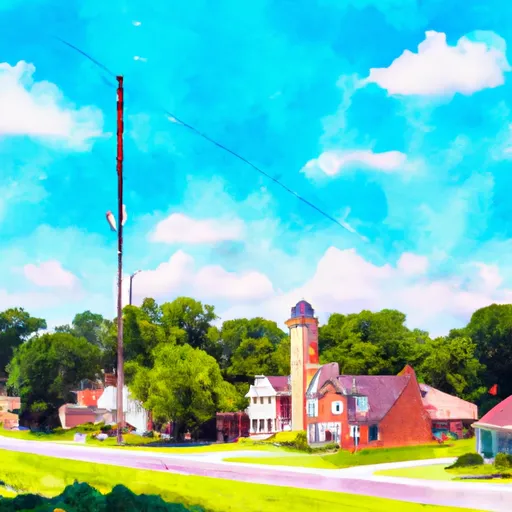-
 Snoflo Premium
Snoflo Premium
Get unlimited access to all our content
With no Ad interruptions! - Start Your Free Trial Login with existing account
Oconee
Eden Index
Climate
8.3
•
Recreation
2.5
•
Community
•
Safeguard
4.2/10

Oconee, Illinois is a small village located in Shelby County. The region experiences a humid continental climate with hot summers and cold winters. The average annual temperature is around 54°F, with temperatures ranging from the mid-80s in summer to the mid-20s in winter. The area is blessed with abundant rainfall throughout the year, contributing to its rich hydrology constituents, including rivers, lakes, and wetlands. Oconee is surrounded by beautiful natural landscapes, offering various outdoor recreation opportunities. Residents and visitors can enjoy fishing, boating, and swimming in Lake Shelbyville, which is just a short drive away. Additionally, there are several hiking and biking trails in the area, providing a chance to explore the scenic beauty and wildlife of Oconee, Illinois.
What is the Eden Index?
The Snoflo Eden Index serves as a comprehensive rating system for regions, evaluating their desirability through a holistic assessment of climate health, outdoor recreation opportunities, and natural disaster risk, acknowledging the profound impact of these factors on livability and well-being.
Climate Health Indicator (CHI): 8.3
Oconee receives approximately
1016mm of rain per year,
with humidity levels near 81%
and air temperatures averaging around
12°C.
Oconee has a plant hardyness factor of
6, meaning
plants and agriculture in this region thrive during a short period during spring and early summer. Most
plants will die off during the colder winter months.
By considering the ideal temperature range, reliable water supplies, clean air, and stable seasonal rain or snowpacks, the Climate Health Indicator (CHI) underscores the significance of a healthy climate as the foundation for quality living.
A healthy climate is paramount for ensuring a high quality of life and livability in a region, fostering both physical well-being and environmental harmony. This can be characterized by ideal temperatures, reliable access to water supplies, clean air, and consistent seasonal rain or snowpacks.
Weather Forecast
Streamflow Conditions
Kaskaskia
Area Rivers
Kaskaskia
Snowpack Depths
Kaskaskia
Reservoir Storage Capacity
Kaskaskia
Groundwater Levels
Recreational Opportunity Index (ROI): 2.5
The Recreational Opportunity Index (ROI) recognizes the value of outdoor recreational options, such as parks, hiking trails, camping sites, and fishing spots, while acknowledging that climate plays a pivotal role in ensuring the comfort and consistency of these experiences.
Access to outdoor recreational opportunities, encompassing activities such as parks, hiking, camping, and fishing, is crucial for overall well-being, and the climate plays a pivotal role in enabling and enhancing these experiences, ensuring that individuals can engage in nature-based activities comfortably and consistently.
Camping Areas
| Campground | Campsites | Reservations | Toilets | Showers | Elevation |
|---|---|---|---|---|---|
| Lake Perry | 20 | 157 ft | |||
| Airey Lake | None | 170 ft | |||
| Flint Creek Waterpark | 156 | 246 ft | |||
| Big Biloxi Rec Area | 31 | 50 ft | |||
| Moodys Landing | 7 | 135 ft | |||
| Keesler AFB Military | 52 | 22 ft | |||
| Cypress Creek Landing | 17 | 103 ft | |||
| Janice Rec.Area | 7 | 116 ft | |||
| Shields RV Military - Gulfport NCB | None | 26 ft | |||
| Fairley Bridge Landing | 6 | 88 ft |
Nearby Fishing
Nearby Ski Areas
Catastrophe Safeguard Index (CSI):
The Catastrophe Safeguard Index (CSI) recognizes that natural disaster risk, encompassing floods, fires, hurricanes, and tornadoes, can drastically affect safety and the overall appeal of an area.
The level of natural disaster risk in a region significantly affects safety and the overall livability, with climate change amplifying these risks by potentially increasing the frequency and intensity of events like floods, fires, hurricanes, and tornadoes, thereby posing substantial challenges to community resilience and well-being.
Community Resilience Indicator (CRI):
The Community Resilience Indicator (CRI) recognizes that education, healthcare, and socioeconomics are crucial to the well-being of a region. The CRI acknowledges the profound impact of these elements on residents' overall quality of life. By evaluating educational resources, healthcare accessibility, and economic inclusivity, the index captures the essential aspects that contribute to a thriving community, fostering resident satisfaction, equity, and social cohesion.

